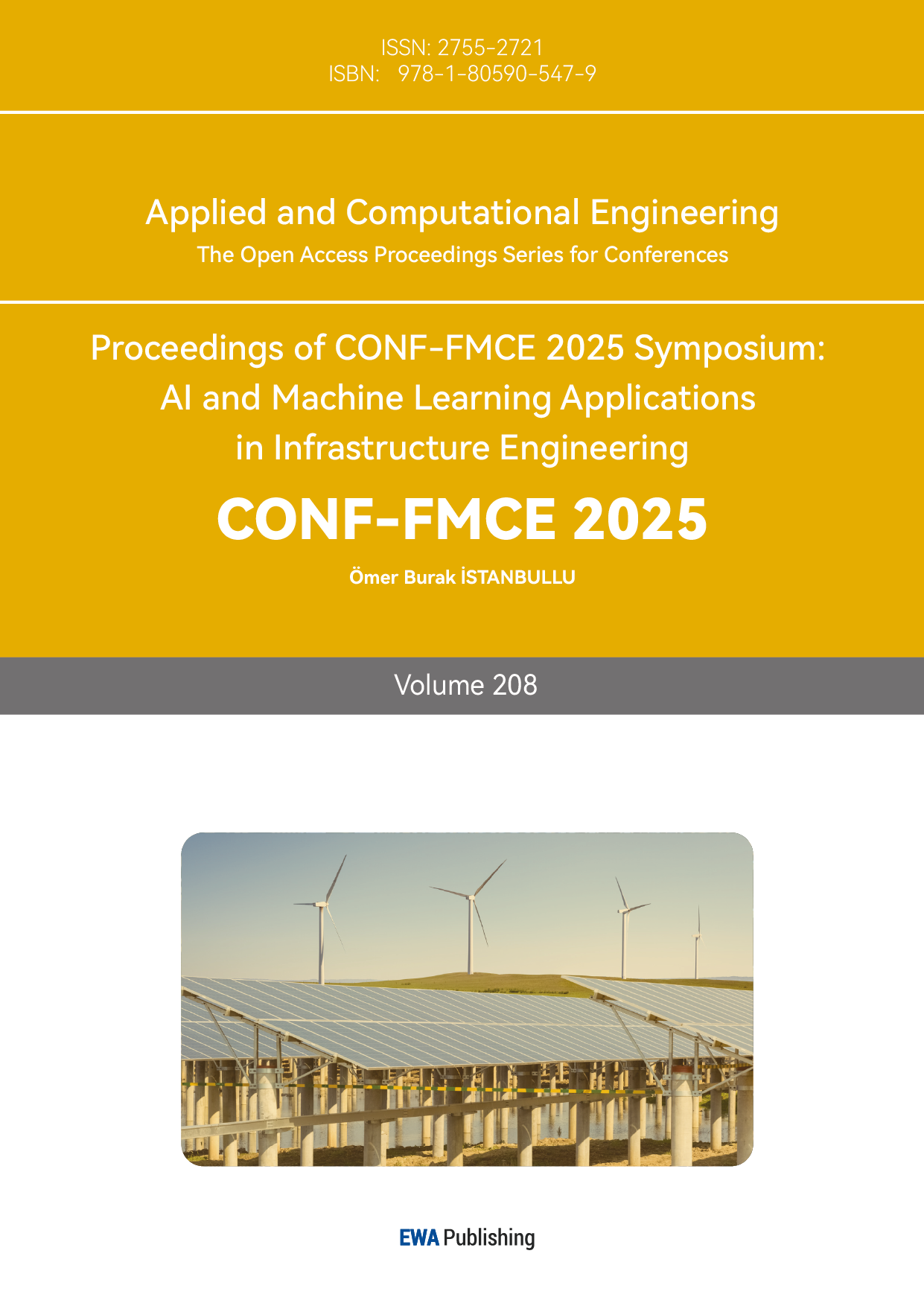References
[1]. Chéret, V. and Denux, J.-P. (2011) 'Analysis of MODIS NDVI Time Series to Calculate Indicators of Mediterranean Forest Fire Susceptibility’, GIScience & Remote Sensing, 48(2), pp. 171–194. doi: 10.2747/1548-1603.48.2.171.
[2]. WANG Qiankun, YU Xinfang, and SHU Qingtai. (2017). Forest burned scars area extraction using time series remote sensing data. Journal of Natural Disasters, 26(1), 1 - 10. (in Chinese)
[3]. Liu, Y.X., Zhang, J., Tang, Y., et al. (2023) 'Comparative Study of Rapid Extraction Methods of Burned Area Based on Sentinel-2 Images’, Forest Inventory and Planning, 48(6), pp.1-6. doi: 10. 3969/ j. issn. 1671-3168. 2023. 06. 001
[4]. Cui, Z.Y., Zhao, F.J., Zhao, S. et al. 'Research on information extraction of forest fire damage based on multispectral UAV and machine learning', Journal of Natural Disasters, 2024, 33(01): 99-108.DOI: 10.13577/j.jnd.2024.0109.
[5]. Avazov, K., Hyun, A. E., Sami, S. A. A., Khaitov, A., Abdusalomov, A. B., & Cho, Y. I. (2023). Forest Fire Detection and Notification Method Based on AI and IoT Approaches. Future Internet, 15(2), 61. https: //doi.org/10.3390/fi15020061.
[6]. LI, M. Z., KANG, X. R., & FAN, W. Y. (2017). Burned area extraction in Huzhong forests based on remote sensing and the spatial analysis of the burned severity. Scientia Silvae Sinicae, 53(3), 163–174.
[7]. Rao, Y. M. (2020). Research on Forest Fire Monitoring and Canopy Water Content Inversion Method of Burned Area Based on Multi-source Remote Sensing Data [D/OL]. Beijing Forestry University.
[8]. Dai, W. X., Zhu, T., Wu, T., Zhu, Y. J., & Chen, K. W. (2024). Forest Fire Loss Assessment Based on Multi-Source Remote Sensing Data. Technology Innovation and Application, 24, 10 - 14.
[9]. Huang, C.Y. (2023) 'Burned Area Mapping and Fire Severity Analyse of Muli Forest Fire Based on Remote Sensing Images and Multiple Machine Learning Algorithms’, doi: 0.27345/d.cnki.gsnyu.2023.000873
[10]. Zhao Shumei, Zheng Xilai, ** Lingling and Zhang Xiaohui, 2006. Study on the Water Environmental Capacity of Xiaozhushan Reservoir in Qingdao. Journal of Ocean University of China: Natural Science Edition, 36(6), pp. 971 - 974.
[11]. Wang Yao. (2016). Yingke Center of Vanke Xiaozhushan in Qingdao. Architecture Technique, 8, 58 - 63. DOI: 10.3969/j.issn.1674 - 6635.2016.08.009.
[12]. Key, C. H., & Benson, N. C. (1999). The normalized burn ratio (NBR): A landsat TM radiometric measure of burn severity. Bozeman, MT: United States Geological Survey, Northern Rocky Mountain Science Center.
[13]. Lutes, D. C., Keane, R. E., Caratti, J. F., et al. (2006). FIREMON: Fire effects monitoring and inventory system. Colorado: US Department of Agriculture, Forest Service, Rocky Mountain Research Station.
[14]. Stroppiana, D., Boschetti, M., Zaffaroni, P., et al. “Analysis and interpretation of spectral indices for soft multicriteria burned-area mapping in Mediterranean regions.” IEEE Geoscience Remote Sensing Letters, vol. 6, 2009, pp. 499–503.
[15]. Chuvieco, E., Martín, M. (1998). 'Cartografía de grandes incendios forestales en la Península Ibérica a partir de imágenes NOAA-AVHRR’, Serie Geográfica, 7, pp.109–128.
[16]. Chuvieco, E., Martín, M.P. and Palacios, A. (2002) 'Assessment of different spectral indices in the red-near-infrared spectral domain for burned land discrimination’, International Journal of Remote Sensing, 23(23), pp. 5103–5110. doi: 10.1080/01431160210153129.
[17]. Joachims T. SVMLight: Support Vector Machine [J]. 1999. .
[18]. Jiang, X., Lu, W. X., Yang, Q. C., et al. Evaluation of soil environmental quality by applying support vector machine [J]. China Environmental Science, 2014, 34(5): 1229-1235.
[19]. Kraemer, H.C. (2015) 'Kappa coefficient’, Wiley StatsRef: Statistics Reference Online, pp. 1–4. doi: 10.1002/9781118445112.stat00365.pub2.



